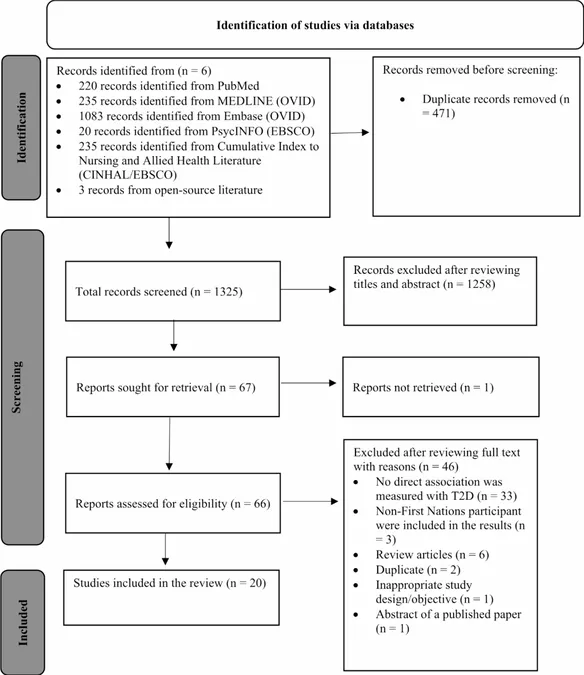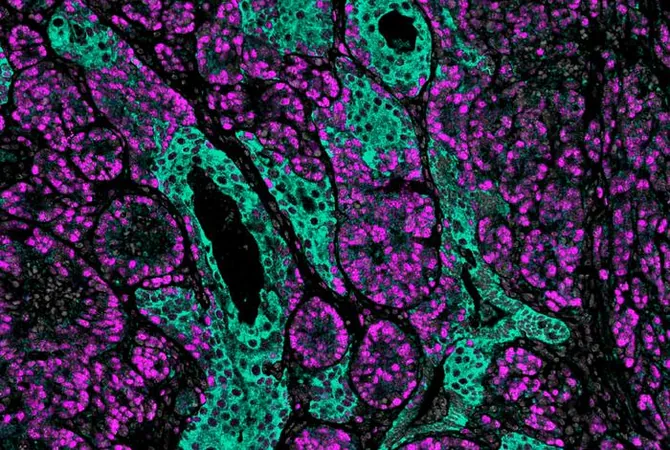
Unveiling the Hidden Risk Factors for Type 2 Diabetes Among Aboriginal Australians: A Groundbreaking Review
2024-11-21
Author: Wei Ling
Introduction
A recent systematic review has shed light on the myriad risk factors associated with type 2 diabetes (T2D) among Aboriginal Australians. As the focus of increasing health disparities, particularly within First Nations communities, this comprehensive study aims to unravel the complex web of sociodemographic, lifestyle, and biological contributors to T2D, a condition that is becoming an alarming health priority in Australia.
Methodology
The review scoured through various electronic databases including MEDLINE/PubMed, Embase, CINHAL, and PsycINFO until August 2023, extracting peer-reviewed studies that examined the relationship between various risk factors and T2D specifically among First Nations Australians. The research adhered to PRISMA guidelines, highlighting the significance of accurately synthesizing the available data.
Key Findings
Analyzing 20 studies, consisting of 12 cross-sectional and 8 cohort studies, the review exposes troubling correlations:
- **Geographical Context**: Indigenous individuals living in very remote areas showed a 61% higher risk of developing T2D, with those near stores selling "Western" foods (high in sugar and unhealthy fats) nearly tripling their risk. This stark statistic accentuates the challenges of food accessibility and choices.
- **Socioeconomic Factors**: Renting homes and holding part-time jobs were found to correlate with an increased likelihood of T2D—signifying the detrimental effects of socioeconomic disadvantage.
- **Obesity Metrics**: There is a strong link between higher BMI and the risk of developing T2D. Those with obesity, a waist circumference exceeding 88 cm for women or 102 cm for men, and an elevated waist-to-hip ratio faced significantly increased risks.
- **Biochemical Indicators**: Elevated triglyceride levels, lower Vitamin D (<53 nmol/L), and higher C-reactive protein (CRP) levels were identified as significant markers associated with T2D among Aboriginal Australians.
Conversely, the study found no significant link between health risk behaviors such as smoking or moderate alcohol consumption and T2D occurrence.
The Bigger Picture
Type 2 diabetes is a major health crisis not only in Australia but globally. The International Diabetes Federation (IDF) estimated that over 537 million adults were living with diabetes worldwide in 2021. This alarming trend is projected to escalate to 643 million by 2030. In Australia alone, approximately 1.3 million individuals were diagnosed with diabetes in 2021, underscoring the urgency of addressing this issue, especially within marginalized groups.
First Nations Australians bear a disproportionate burden, with three times the rate of diabetes compared to non-Indigenous populations. The direct correlation between socioeconomic status, remote living conditions, and the increased prevalence of T2D is evident. For instance, those living in rented conditions and with lower job stability often encounter barriers to accessing healthy foods and healthcare resources.
Policy Implications and Recommendations
This review not only elucidates the risk factors but also emphasizes the need for targeted interventions. Strategies such as enhancing food security, promoting community-based health initiatives, and improving access to healthcare services in remote areas are critical in mitigating the risks associated with T2D. Furthermore, incorporating culturally appropriate health messages and programs tailored for First Nations Australians could vastly improve health outcomes.
Conclusion
By unveiling the risk factors for T2D among Aboriginal Australians, this systematic review serves as a crucial step towards understanding and addressing the intricate health disparities faced by First Nations communities. Efforts to "Close the Gap" in health outcomes must prioritize these insights, paving the way for a healthier future for all Australians. Awareness and targeted interventions can potentially reverse the tide, ensuring that vulnerable populations are not left behind in the quest for better health and longevity.







 Brasil (PT)
Brasil (PT)
 Canada (EN)
Canada (EN)
 Chile (ES)
Chile (ES)
 España (ES)
España (ES)
 France (FR)
France (FR)
 Hong Kong (EN)
Hong Kong (EN)
 Italia (IT)
Italia (IT)
 日本 (JA)
日本 (JA)
 Magyarország (HU)
Magyarország (HU)
 Norge (NO)
Norge (NO)
 Polska (PL)
Polska (PL)
 Schweiz (DE)
Schweiz (DE)
 Singapore (EN)
Singapore (EN)
 Sverige (SV)
Sverige (SV)
 Suomi (FI)
Suomi (FI)
 Türkiye (TR)
Türkiye (TR)